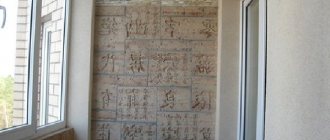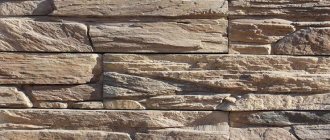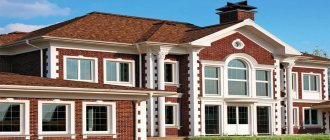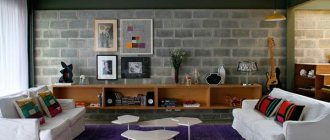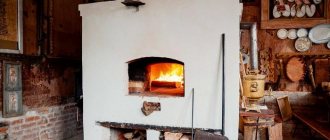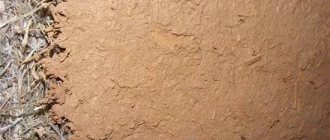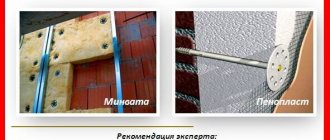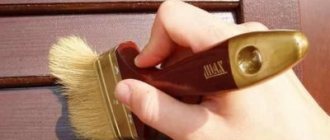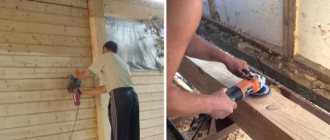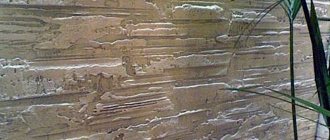A room is made using decorative plaster. Decorative plaster of the facade of the house, change your cottage beyond recognition. And the secret lies in the chosen color and texture, as you can make beautiful patterns. But you should not forget that decoration or finishing is not the most important element in repairs with facade plaster; it only provides a protective coating for the surface of the house from environmental factors: direct sunlight, high humidity. It has the property of preventing warm air from leaving the room and preventing noise from entering the room.
Plaster removes unevenness on the walls. The composition contains many components that create elasticity when applied to the surface. The shelf life, how much material is needed per 1 m2, layer thickness parameters and at what temperatures the preparation should take place are indicated on each package individually. It is also possible to use TechnoNIKOL - facade insulation under plaster.
Applying the mixture to surfaces made of various materials
The advantage stated by the manufacturers is the ability to apply plaster for exterior use on many types of surfaces, but you need to consider how to properly work on each surface.
To begin with, you should follow the general rules:
- do not carry out work outdoors if the air temperature is less than 5 degrees Celsius;
- keep humidity at the required level, not higher than 70%;
- plastering the facade of a house with your own hands is done continuously, since when you stop, seams will appear visible to the eye;
- Immediately after construction, the building should not be finished; it should shrink.
This is a general set of requirements and recommendations for all types of mixtures.
How to get the “Marsiniada” invoice
To obtain the “Marsiniada” texture, structural plasters are used. Using this technique, they create a stylish and effective pattern that is suitable for decorating walls indoors and outdoors.
"Marsiniada"
According to the instructions, the structural mixture Desan Versagele is required for plastering. However, the surface pattern is obtained using a special technique, and not due to any features of the composition. Therefore, to create the “Marsiniada” texture, you can use any suitable structural plaster.
Desan Versagele
Instructions for applying plaster
Execution technique
Step 1. Open the container with wet plaster and thoroughly mix the composition with a spatula.
Step 2. Using a trowel or stainless steel spatula, apply the mixture to the wall, trying to obtain a uniform layer up to 5 mm thick.
Applying plaster
Step 3. Immediately after applying the plaster, it is covered with thick plastic film. Smooth out all the waves with your hand so that the film sticks to the plaster mixture.
Step 4. Perform a series of movements with the palm, trying to dislodge part of the film without leaving a fingerprint. In this way, a thin layer of plaster is spread over the entire surface of the wall. Make sure that no air bubbles remain under the film.
Creating an invoice
The film does not straighten out evenly, but creates a chaotic texture
Step 5. Wait for the relative hardening of the plaster mixture (at least 12 hours).
Step 6. Carefully remove the plastic film.
Remove the film
Step 7. After the walls have completely dried (after 24 hours), treat the surface with fine-grained sandpaper.
Sandpaper holder
Step 8. Using a dry paint brush or rag, remove dust from the wall.
Step 9. Apply a layer of finishing primer with a brush or roller.
To more reliably protect the plastered surface, you can apply a layer of varnish or paint to the wall. To perform this task, use any most convenient tool: spray gun, roller, paint brush.
Applying varnish
The resulting texture
Rules for applying decorative plaster
There are no important requirements for carrying out plastering work. The finished mixture is applied to the surface with a wide spatula in the desired layer. Try not to do it in squares, but evenly over the entire surface. Then the wall will be smooth over the entire plane, homogeneous in structure.
You should not do it according to the following scheme: apply to part of the wall on the first day, and finish the remaining surface the next day.
The joints of adjacent mixtures will be very noticeable.
According to insulation
When the walls are insulated with expanded polystyrene slabs, it is better to place a layer of plaster on the reinforcing mesh. Many owners make the mistake of first securing the mesh and then applying adhesive on top. It would be better to do the opposite: first apply glue, then press the mesh into the adhesive composition.
On brickwork
There are two main methods of applying mortar to a brick wall, using a machine and using your hands. To ensure uniform plastering of external walls, it is worth installing plaster beacons. They should be secured using a plumb line, which will indicate how inclined the wall is. When working, use a long rule. The mixture is placed between the beacons, and then pulled from the bottom up.
Application to concrete
A concrete plane is rarely perfect. To carry out finishing work, it is worth priming the surface. You can cover the surfaces with a mesh. Spray the wall with clean water before installation. Apply the mixture to the surface using circular rubbing.
Facade plaster for aerated concrete
The heterogeneous structure of aerated concrete has specific features. A building made of silicate blocks is not protected from moisture, because the material absorbs water well. Simple plastering of external walls is useless. Consider the features of this material.
They are as follows:
- the block is smooth, not all compounds will adhere well to it;
- takes moisture from the plaster, then the coating cracks;
- The vapor permeability of the blocks and the solution must match.
You should choose a special powder for aerated concrete. The application technology is similar to brick.
Application to wood
The work must be carried out no earlier than one and a half years after the installation of the wooden house. The structure must shrink. When plastering wooden walls, the wood is initially protected from moisture, because it will absorb it from the plaster. This means that after the mixture dries, cracks will appear. Previously, shingles were used to cover wooden surfaces, but today other methods are used. By applying a protective layer to the wood, the owner will subsequently save himself from problems with fungus and microbes.
The following solutions are chosen for wooden walls:
- lime;
- plaster;
- cement.
At the preparatory stage, defects in the wooden surface should be eliminated. Seal large cracks, then install a mesh fabric (wooden shingles or metal), install guides, and cover with soil. Then you can plaster the surface. Methods that create decorated surfaces with an interesting texture are often used.
Work progress
Whatever type of plaster you choose, the pattern of its use will remain the same.
Finishing scheme
The general scheme of facade finishing is represented by the following layers:
- A – rough surface for finishing, here brick; when we insist on attention to vapor permeability, we first of all have in mind aerated concrete, famous for this quality;
- B – waterproofing – a mandatory layer, especially when using separate insulation boards; Note that the proposed scheme does not involve priming the rough surface, and this is its advantage; if a primer is used, we recommend using a special heat-insulating one;
Helpful advice! When applying any layers of a sheet nature, we advise you to always strive to reduce the joints. If this is not possible, then the joints must always be treated with a double layer of adhesive tape of a similar nature. This primarily applies to waterproofing film.
- C – insulation boards, mineral wool or foam;
- D – fasteners for insulation; often a lath is formed to fix the insulation, which avoids the use of fasteners directly on the slabs;
The question of how to properly plaster the facade of a house is not limited only to plaster; you will need to create such a multilayer structure with your own hands (see description in the text)
- E – another layer of waterproofing;
- F – mesh for fixing the first layer of plaster – a mandatory layer that should not be neglected; Mesh fasteners are often used as beacons for the first layer of plaster;
- G – first layer of rough plaster;
- H – second layer, already finishing.
Procedure
Here is the progress of work, starting from the moment of direct work with plaster:
- although let’s not forget that the surface must initially be prepared in the most careful way - all potholes are primed, all protrusions are cleaned, everything must be completely dried; if there is a periodic appearance of moisture on the surface, the cause must be identified and completely eliminated; without resolving this issue, it is useless to continue working - you will not receive an answer to the question of how much the upcoming work will cost, the cost of the defects will be very high;
- Next, having decided how to plaster the facade of the house, we proceed directly to solving the problem of how to plaster the facade of the house;
When deciding how to plaster the facade of a house correctly, let’s never forget about the grid and beacons
- We attach a mounting mesh to the work surface, which will significantly increase the adhesion of the plaster; if the surface is large, we advise you to kill two birds with one stone and use mesh fasteners in the form of tape beacons for the future first layer of plaster;
- then we proceed to apply the first layer, which is often done by spraying to speed it up;
Such automatic spraying is possible, although the instructions will force you to use a spatula later to smooth it out.
- if the first layer was applied mechanically, additional leveling with spatulas cannot be avoided;
- We wait for the layer to dry completely and begin sanding;
- when the sanding is finished, we wait a day and proceed to the finishing plaster, the thickness of which will no longer be less than the first; if there the thickness can reach 5 cm (hence the help from beacons), then at the finish it is 0.3-0.5 cm, but it is this that will give the entire work its appearance; Here we are already working only with a falcon and spatulas.
The combination of several technologies will create a truly reliable and good-looking facade
How to choose facade plaster for exterior work
Construction markets and stores have a large assortment of plasters, but when buying facade mixtures, you do not need to pay attention only to the colors of the mixtures. You have specific tasks, and to solve them you need to choose a product with the necessary parameters.
The mixture must perform the following functions:
- water absorption (less is better);
- protection from ultraviolet rays;
- adhesion percentage;
- low percentage of shrinkage, allowing it to not crack for a long time;
- good vapor permeability.
You can apply the composition to the wall yourself if you have a sufficient level of skill. Finishing the facade will be a simple task for you. If you have no experience, it is better to hire a specialist. Otherwise, there is a high probability of damaging the surface. It is worth looking at shelf life, frost resistance, consumption per square meter. Based on the available data, it will be easy to understand whether this mixture is suitable for plastering surfaces in your cottage, and what the planned consumption of the mixtures is.
Use Cases
In the photo you will see a finished finished surface that is suitable for both industrial sectors and public construction. This finishing is especially relevant in those rooms that are characterized by increased operational load. For example, American can be used to decorate walls in a kindergarten, office space, store, airport, hospital, hotel complex. In the video tutorial you can see all the features of using the American topcoat.
Tools and accessories
The main tool for professionals for finishing work is a triangular spatula with rounded edges.
Types of mixtures
Decorative types of mixtures for a modern interior can be used as the main elements or as an excellent addition to the created design. Depending on what you choose, you can easily bring any design solutions to life.
You can use plaster to make a continuous covering on the wall, or use it to decorate individual fragments in the form of columns, doors, decorative panels or niches. When the application work is completed, the wall will receive the texture determined by the type of filler, and will also be able to hide all flaws. You can use mixtures of the American type not only in some rooms, but even in the pool.
Classification
Plaster mixtures contain binders, filler (stone, grains of sand), and also additives, which improve performance characteristics. For example, increase adhesion to the treated surface, antiseptic and bactericidal properties.
Depending on what binder is used, decorative plaster can be divided into:
- Mineral, which contains a lime-cement mixture as its base. Similar materials have been adapted for use in interior and exterior types of finishing. The mixture has a high level of vapor permeability.
- Polymer based on acrylic resin. This composition is resistant to high levels of humidity, temperature fluctuations, and the negative effects of UV rays. American polymer decorative plaster is suitable for decorating facades and rooms, and through the use of various additives, you can create even the most complex textures, for example, like leather or velvet. Acrylic plaster will not work if you plan to carry out only external work.
- Silicate, which is based on liquid glass. The composition has such distinctive features as a low level of elasticity, so you have the opportunity to apply the composition even to those walls that are made of cellular concrete. The mixture has high resistance to high levels of humidity, it withstands mechanical impacts well, and does not allow fungus and mold to develop on the walls. To increase the performance characteristics of the silicate mixture, you should first carry out rough plastering, while adding a little lime to the mixture.
- Silicate, which consists of silicone resins and fine filler. The latter is usually marble dust or fine sandstone. The finished mixture can be used to treat the facade of a building. The plaster also had a good antistatic effect, since it does not accumulate dust and dirt.
Please note that for small rooms, for example, for a corridor, it is better to choose a calm, fine-grained texture that is devoid of volumetric reliefs.
If we divide by decorativeness, then there are the following groups:
- Venetian plaster is the most refined of all modern mixtures. When using it, you can get coatings like natural marble, crinkled fabric, silk and even velvet. It is characterized by a finely dispersed composition and high plasticity, which means that the surface will be smooth. To obtain shine on the walls and a polishing effect, use special varnishes or protective wax treatment.
- Textured decorative plaster is produced on the basis of various types of synthetic resins, which are supplemented with cotton fibers, crumbs of natural/artificial materials and inclusions of metal. If you wish, you can make original bas-reliefs with the texture you like.
- If pebbles are used as a filler for the mixture, this mixture, which is heterogeneous in consistency, will give several shades at once. The mosaic effect will make it possible to use it to decorate the facade and basement of a building. This is an ideal option for decorating corridors, bathrooms and office spaces.
Preparing the surface for applying the material
After completing the construction of the walls of the cottage, select a suitable design. Think over the finishing sequence yourself, develop a plan, and use the services of experienced designers. In the latter option, they will not only help you place an order for the project, but will also be able to calculate the consumption of materials.
Before plastering the facade, find out whether any mixture has been applied to the wall before. If such a coating has been applied, it will have to be carefully leveled by removing the top layer completely or partially. The surface is cleaned of dirt using a brush, and then degreased. Then take a primer that is suitable in composition for the plaster (information on the appropriate type of primer will be written on the bucket with the plaster).
You can often find a primer from the same manufacturer as the plaster.
Then there will be perfect adhesion between the walls and the mixtures. when the home has just been erected, carry out preliminary work by cleaning the walls with a brush, then cover them with soil. The preparatory work has been completed. Decorative facade plaster is supplied ready-made, or as a dry powder from which the mixture will be made.
American
What is American? Decorative plaster, which combines ease of application to the surface and a large selection of textures and colors.
Manufacturers try so hard to create new compositions that they offer various collections of decorative coatings similar to the American type:
Industry". This type of decorative plaster is distinguished by the fact that it is fine-grained. As a result, you will get a mixture that hides surface imperfections well. I would like to note among the positive aspects of the collection that its use requires only minimal preparation of the walls before use. As a result, you can save time during repair work, in particular during finishing.
«- " Fasa de". This type of decorative plaster was developed specifically for decorating building facades. American has certain characteristics - increased resistance to temperature fluctuations, excellent protection against vandals. Only the coarse fraction is used as the basis of the mixture.
- "With comfort." This collection uses only fresh shades that perfectly combine lightness and purity. Basic tones are beige, gray, chocolate, and all this using the middle fraction.
- "About ffice". This type of American decorative plaster will help decorate your home or apartment with bright colors.
Mother-of-pearl or metallized chips, which are added to the mixture, will give the walls a beautiful look, and can also increase the degree of repulsion of dust and dirt from the walls.
Peculiarities
Decorative types of plaster, namely American in our case, have some features that professionals have already appreciated:
- A unique design that will perfectly transform the appearance of the surface.
- The American topcoat is a special protective reinforcing coating that is easy to maintain and also prevents the walls from getting dirty.
- The plaster has good soundproofing and soundproofing characteristics.
The American mixture also has good adhesive properties. This coating is vapor-permeable, so the walls will “breathe,” which means the mixture is ideal for wet rooms. If you wish, you can easily dismantle such wall coverings without changing your usual rhythm of life. When applying American decorative plaster, up to 250 m2 of surface can be treated per day, and this will help to significantly reduce the duration of finishing and construction work in general. If you choose this type of finish, you can expect significant savings of up to 30% over traditional options.
Types of facade paint on plaster for exterior work
If the decorative plaster for the facade of the house has become dull, paint will help. There are three main types of paint. With the main fillers - acrylic, silicate and silicone. We look at the resistance of the composition to weather, whether the paint has shine.
How to imitate wood using plaster
The combination of two types of plaster will make the façade stand out. Decorative facade plasters withstand weather conditions well and are resistant to fungus, moss or mold. Decorative plasters are a thin layer applied to a previously prepared dry base. Decorative facade plasters that look like wood allow you to decorate a facade that is visually impossible to distinguish from real wood. To obtain imitation wood, you must first purchase a silicone matrix to imitate wood. The relief can repeat the pattern of a real tree: cedar, pine, aspen or larch. Several steps of applying plaster with imitation wood.
- Apply anti-adhesive lubricant evenly to the silicone matrix (as and how much indicated in the instructions). Lubricant will make it easy to remove the matrix from the plaster after creating the pattern;
- Place the silicone mold on the freshly applied plaster. Use a rubber roller to press the mold several times. The texture of the shape will be clearly imprinted on the surface. To achieve a realistic-looking coating, you should occasionally turn or move the silicone mold;
- After the decorative plaster has completely dried, lightly sand the sharp edges of the pattern with sandpaper;
- Before applying colored impregnation, thoroughly clean the plaster from dust. Apply colored impregnation after the plaster has completely dried (2-3 days). Impregnation is applied with a brush or roller in 2 layers.
Imitating wood with plaster takes longer than applying regular plaster. But with this method you can perfectly combine plaster and wood on the facade without spending a lot of money.
Anyone can afford to decorate the facade of a house with plaster and wood. You can use different types of plasters and wood, or you can imitate wood with plaster. The main thing is that the end result will be a combined façade in a modern style.

